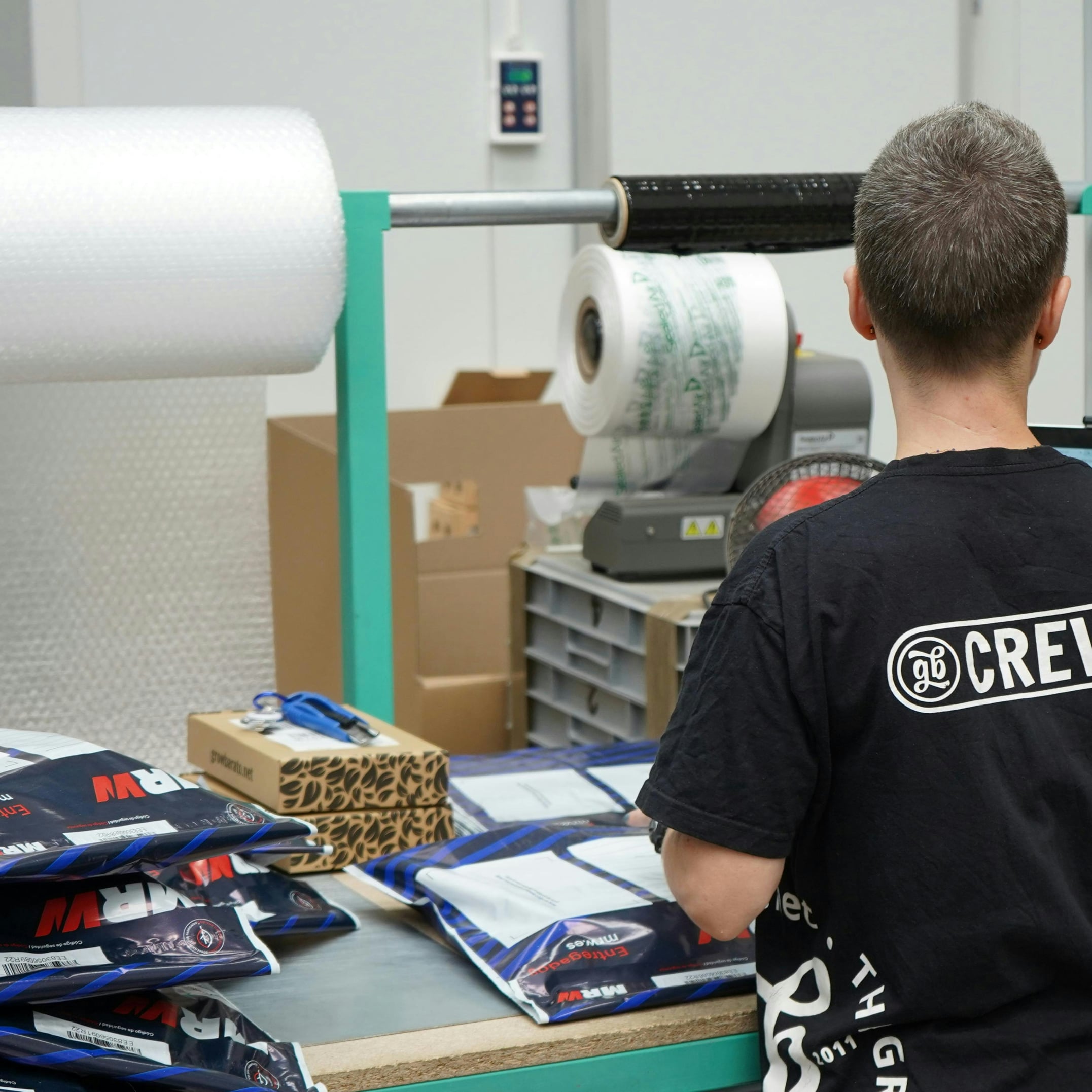Introduction
A well-designed warehouse packing station is the heart of a smooth fulfillment process. By centralizing packaging materials, tools, and work surfaces in one organized area, you reduce wasted time, minimize shipping errors, and improve employee workflow. Whether you’re setting up a new warehouse or upgrading an existing one, creating a thoughtful packing station layout can dramatically boost efficiency and accuracy. In this guide, we’ll explore how to design an optimized warehouse packing station, from essential equipment to ergonomic design principles — helping you ship smarter and faster every day.
What Is a Warehouse Packing Station?
A warehouse packing station is a dedicated space where products are checked, packed, and labeled before shipment. It acts as the final checkpoint in your order fulfillment process, ensuring accuracy and consistency. By consolidating supplies like boxes, labels, and tape guns in one area, your team can pack more orders in less time with fewer mistakes.
Modern fulfillment operations often follow a pick-and-pack system, where items are picked from storage shelves and brought directly to the packing station for preparation. This workflow improves turnaround speed and helps maintain order accuracy — both essential for customer satisfaction.

The Warehouse Packing Process (Step by Step)
Every warehouse follows a similar packing process designed to prepare items for shipment while protecting them during transit. The key stages include:
- Printing – Generate order and shipping labels for tracking and verification.
- Wrapping – Secure items with protective packaging materials to prevent damage.
- Boxing – Place wrapped items into appropriately sized shipping boxes.
- Sealing & Labeling – Seal boxes, attach labels, and prepare them for shipment.
- Final Check – Verify that each order is complete and accurately labeled.
When done efficiently, these steps minimize bottlenecks and ensure consistent output, especially during peak shipping periods.

Key Elements of a Packing Station Layout
Designing a high-performing packing station begins with its physical layout. The goal is to create a streamlined, ergonomic workspace that reduces unnecessary movement and keeps essential tools within reach.
1. Workbench and Surface Space
Your workbench is the core of the packing station. Choose a durable, industrial-grade workbench that provides enough surface area for packing, labeling, and sealing. 4dock’s industrial workbenches are designed to handle heavy-duty operations and can be configured with drawers, uprights, and shelving for maximum efficiency.
2. Shelving and Supply Organization
A well-organized station allows staff to access boxes, labels, and packaging materials without delay. Consider installing adjustable storage racks and shelving units above or beside the workstation for easy access to supplies. Use bins or labeled compartments to store small tools and reduce clutter.
3. Equipment Integration
Integrate essential devices directly into your layout — such as label printers, scanners, and tape dispensers. This setup eliminates the need to move between stations and keeps workflows smooth. For high-volume environments, include a roll holder for wrapping materials and a monitor mount for digital order tracking.
4. Lighting and Visibility
Good lighting is often overlooked but is critical for reducing packing errors. Install LED or task lighting above packing areas to ensure all labels and items are easily visible. Proper lighting also improves worker comfort and compliance with OSHA standards.
Ergonomics and Safety in Packing Stations
Warehouse packing is a repetitive and physically demanding job — which makes ergonomics essential. By incorporating ergonomic design principles, you reduce fatigue, prevent injury, and improve productivity.
- Use adjustable-height workbenches so employees can alternate between sitting and standing.
- Add anti-fatigue mats to reduce pressure on feet and legs.
- Ensure tools are placed within a comfortable reach zone to minimize overextension.
- Maintain clear walking paths and organized storage to reduce trip hazards.
How to Organize Packing Supplies
Keeping your packing supplies organized ensures consistent speed and accuracy. Here are some ways to structure your supply zone:
- Label Printers: Keep them near your workstation for quick access.
- Roll Holders: Mount rolls of kraft paper, bubble wrap, or plastic film on stands.
- Tool Holders: Store tape guns, cutters, and scanners in designated spaces.
- Bins and Carts: Use material handling carts to move bulk packaging materials efficiently.
Label all containers and implement a simple restocking system to ensure your supplies never run low during busy shifts.
Benefits of a Well-Designed Packing Station
A strategically designed packing station offers long-term benefits for warehouse performance and employee satisfaction:
- Increased Productivity: Streamlined layout and organization reduce wasted motion and downtime.
- Better Accuracy: Centralized materials make it easier to double-check each order before shipment.
- Improved Ergonomics: Proper setup minimizes strain and supports worker well-being.
- Cost Efficiency: Efficient packing processes reduce labor time and packaging waste.
Together, these benefits translate into faster shipping, fewer returns, and happier customers.
Conclusion: Build a Smarter, Safer Packing Station
In today’s competitive fulfillment environment, your warehouse packing station plays a pivotal role in overall efficiency. A clean, well-organized, and ergonomic packing area not only speeds up order processing but also protects your team’s health and your brand’s reputation.
Whether you’re outfitting a new facility or upgrading an existing one, explore 4dock’s range of industrial workbenches, storage shelving, and material handling solutions to build a packing station designed for speed, safety, and success.

